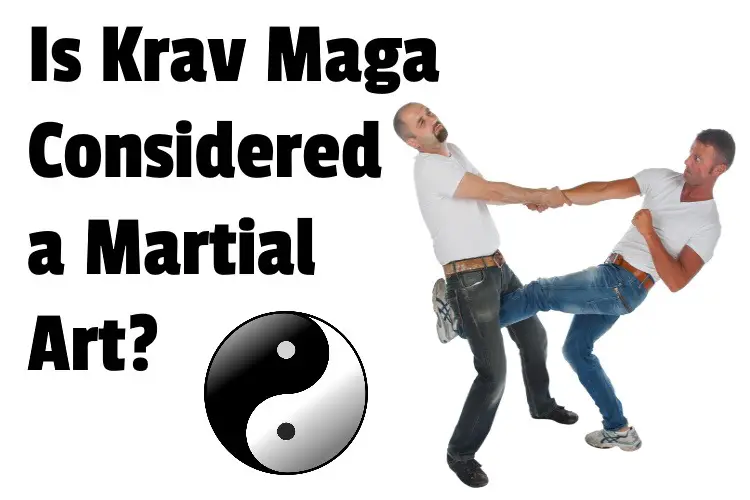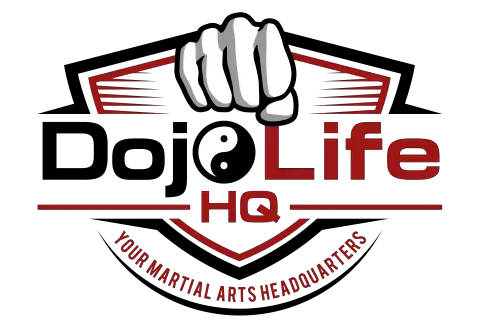
Almost all martial arts are of Asian origin, while Krav Maga is an Israeli system. And contrary to what many often think, self-defense or fighting is not the essence of martial arts! So is Krav Maga considered a martial art?
Here’s what I know from years of study:
Krav Maga is not a martial art. It is an Israeli self-defense system whose purpose is to help protect its practitioners from harm by any means necessary, as simply as possible. Unlike martial arts, Krav Maga also has no spiritual components.
If their lives were at stake, for example, a knowledge of Krav Maga can help them incapacitate an assailant as quickly as possible. But, Krav Maga is not considered a martial art.
I have been involved in martial arts on and off my whole life and seriously for the past 8 years. In this article, we’ll explore why Krav Maga is not really a martial art.
Let the fun begin…
Yesterday the sun was shining and it was a busy day for the RKM team: a grading for our Juniors; a private training session; and 2 classes for adults in different locations.
Great to catch up with more of our members and see them getting back into training – good work, folks! 💪 pic.twitter.com/vZDrtLg6R9— Rencounter Krav Maga (@RencounterKMG) March 19, 2021
How do self-defense systems differ from martial arts?
Self-defense systems are designed for self-protection, utilizing simple but brutal techniques designed to render an attacker disabled. They can be mastered in a very short time, while martial arts are more holistic systems that combine techniques and a spiritual component and take years to master.
Second, self-defense systems are highly practical modern systems; as such, they’re often more effective.
Most martial arts are intricate ancient systems or based on ancient systems designed for a different period and context. Perhaps, for a time when people used swords and fought fair (because of a code of honor).
Third, as I hinted at earlier, martial arts are not really about self-defense or fighting. They teach self-defense and fighting, but in a way that’s a tad alien to our western minds.
So, unless one spends a considerable chunk of time immersed in their philosophy, it may be hard to “get” them.
Self-defense systems, on the other hand, require no philosophical or spiritual beliefs. They’re actually what they appear to be about.
Lastly, martial arts have “katas,” patterns, specific ways that have been codified and are taught in a predetermined manner.
Self-defense systems, on the other hand, are often more flexible and dynamic systems that are not strictly focused on a limited number of ways of defending oneself but are continually borrowing from and integrating techniques from other systems.
Do you think a Krav Maga fighter can beat up an MMA fighter?
Check out my take in a recent article of mine where I looked at KM vs. MMA. In it, I showed that it’ll be a tough call and that…
Just click the link to read it on my site.
KRAV MAGA
Self Defense Vs Martial Arts:
Martial arts is about the art, self-defense is about violence – Martial arts focuses on artistic expression, philosophy, spirituality, competition, etc. Self-defense only focuses on preventing and dealing with modern violence . pic.twitter.com/klw7d214xy— KMT INDIA (@kmtindia) October 29, 2019
What are the similarities between self-defense and martial arts?
Both martial arts and self-defense systems teach skills that help practitioners protect themselves. Both require discipline and frequent training to master and instill confidence and resilience in those who practice them.
This is really what most people want.
I suspect that most people might not be interested in the character development facet of Eastern martial arts. They actually want to learn how to fight.
And, virtually all martial arts can equip you with this skill. Even the so-called “soft” martial arts like Aikido have lethal techniques that are highly effective.
The simple fact that their training sessions are predetermined, and that one has to show up and perform certain drills over and over again helps one to deepen one’s natural capacity for discipline.
Discipline, as you know, is a master-skill that opens many doors in life.
In fact, if you pick some of the most successful people in almost any domain, there’s a high probability that they are also trained martial artists or have a form of self-defense they’re good at.
Both self-defense and martial art imbue their practitioners with courage and confidence. We all know that some environments and people are dangerous and that fear is crippling. Fear impacts our self-esteem adversely.
But those trained as martial artists or who have mastered a form of self-defense are usually confident because they believe that if conflict were to erupt, they stand a good chance of protecting themselves.
Is Krav Maga something you could teach yourself at home? Yes, you can.
I shared actionable tips in a recent article of mine. It’s not easy since a lot of the techniques do ideally require a partner to train with. But there’s one way that works really well at home alone.
Just click the link to read it on my site.
Martial Arts: Sports vs. Self-Defense | Moosin http://t.co/ukm0CBPgbj pic.twitter.com/i4N3SjvXxb
— Moosin Magazine (@moosinnews) August 6, 2014
Does Krav Maga have belts?
Krav Maga initially had no belt system. But later, when the training was made available to civilians, Judo’s uniform and the ranking system were adopted. But some Krav Maga organizations continue to use no ranking system or belts.
Let’s look at the belts used. They denote the level of mastery a student has attained. They include:
- Yellow Belt Level (4 months)
- Orange Belt Level (6 months)
- Green Belt Level (9 months)
- Blue Belt Level (9 months)
- Brown and Black Belt Level (12 months)
The Yellow Belt is symbolic of the first level, the Orange Belt, the second level, the Green belt, the third level…
The months shown are estimates since the number of months each student spends may vary. To progress from one level to another, students have to pass a test.
So what do you think will happen in a contest between a Krav Maga practitioner and Kung Fu master?
I explored both styles in a recent article of mine. Bruce Lee, of course, originally came from a Kung Fu background. So surely someone like him could beat any martial artist?
Just click the link to read it on my site.
A NEW IMPROVED METHODOLOGY & knowing we can once again HELP EVEN MORE people learn VITAL Life-Saving Krav Maga SELF DEFENCE Skills that is what is keeping us going.
EMPOWERING PEOPLE: https://t.co/r9hy7U6wNI
We are committed to keeping communities safe. pic.twitter.com/bicWqIR1kh
— Krav Maga Spartans (@SpartansAcademy) March 19, 2021
Why do most martial arts come from Asia?
One of the reasons martial arts flourished in Asia is because the development of firearms came relatively late in these countries. As such, their indigenous arts had more time to flourish before being altered by modernization.
In the course of my research, I came across a post ostensibly explaining why most martial arts come from Asia: They have cooler outfits.
Jokes aside, I doubt that there’s hardly a race or tribe that has no means of defending itself. Or some form of self-defense, no matter how rudimentary.
Even the most primitive tribes had ways of defending themselves. If they didn’t, there wouldn’t have been wars.
The term martial art is a Western term, meaning the “art of Mars.” Mars being the Roman god of war.
So some facets of their cultural heritage, such as the martial arts, were maintained, while some of the traditional martial arts in the west shriveled under the pressure of modernization.
I guess the logic in the West went something like: Why learn hand-to-hand combat when you can buy a gun?
Which is a smart way of looking at the challenge. It’s akin to the wisdom in the expression: Why take a knife to a gunfight?
In truth, Asian martial arts (cool outfits aside) are the most popular. I suspect it’s because they’re the most alluring and intricate systems.
They also have a certain depth, balance, and artistry that’s lacking in, say, western boxing or wrestling. There’s even an element of etiquette and consideration for one’s opponent.
Asian martial arts also speak to a logical part of our nature that knows that it’s true we need to learn how to defend ourselves. But that our aggressive impulses should be tempered through discipline, such as the type on offer in most Asian martial arts.
Asian martial arts also reflect the “Yin” and “Yang,”
That’s a duality that’s expressive of the feminine-masculine energy we know is needed to be a well-adjusted personality. We like the idea of power, but we also know it must be tempered with control.
And, above all, they are about fighting, and they’re not about fighting at the same time. A reflection of the Japanese concept of Mushin, in which apparently contradictory ideas coexist in harmony!
When the entire Buddhist civilization was erased from the Indian subcontinent in the worst ever Holocaust in history, Buddhist monks started training in martial arts to ensure the same would not occur in other Buddhist lands. Buddhist martial arts are the world’s most popular. 👊 pic.twitter.com/Ux9GimFUn1
— Zenji Nio Foundation Staff 🇯🇵🇨🇦 (@zenji_nio) June 14, 2020
Is Krav Maga the best way to defend yourself?
Krav Maga is the best self-defense system as there are no extraneous spiritual or philosophical concepts to grasp and no choreographed dance-like moves to master. The only goal is to be able to protect oneself from harm by any means necessary.
This is one of the reasons it is super-effective. In fact, it’s one of the defense systems NAVY SEALS are taught. (And, that’s saying something.)
It’s most useful in a situation where there’s a high possibility that one would be seriously injured or even killed.
Krav Maga has some techniques that may seem crude when we’re in a comfortable situation but may save our lives in the heat of a serious altercation.
They include kneeing the groin, eye-gouges, and elbow strikes.
When properly executed, there’s hardly any man that can remain standing when a swift, unexpected knee connects to their groin. They’re going down.
Great. But, you’ve heard that Kenpo is pretty good, and you’re wondering if a Kenpo fighter won’t trounce a Krav Maga fighter?
Why not check out a recent article where I looked at Kenpo vs. Krav Maga, and find out.
Just click the link to read it on my site.
Conclusion
We looked at the similarities and differences between martial arts and self-defense systems.
We wondered if there’s a ranking system in Krav Maga and the forms it takes.
And, we mused about why virtually all popular martial arts are from Asia? It’s funny, right? The last part of the article explains why Krav Maga is the best form of self-defense.
